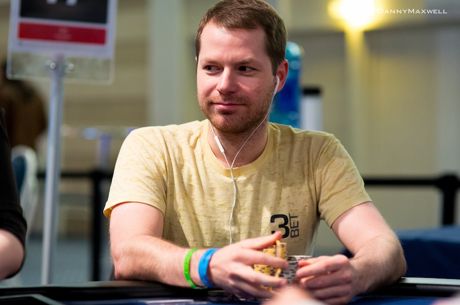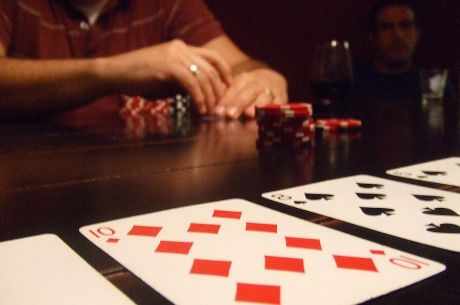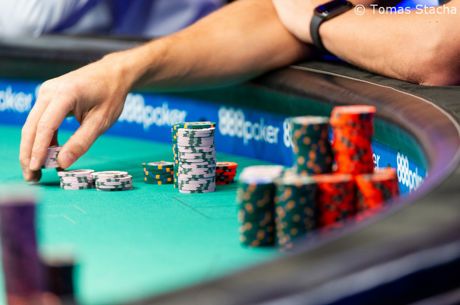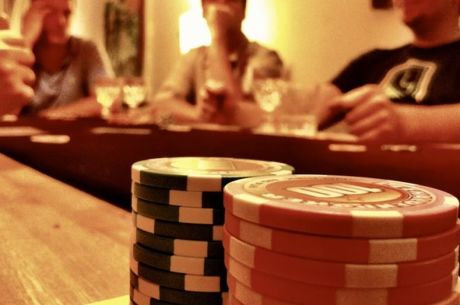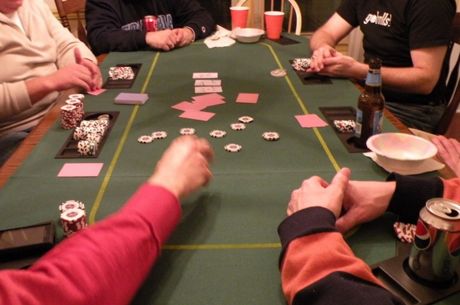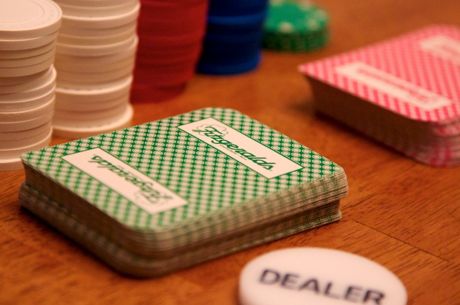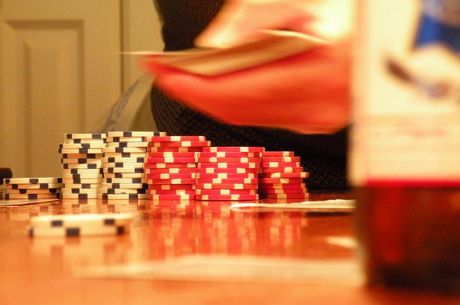Home Game Heroes: Upending Conventional Poker Wisdom -- Never Play With Scared Money?
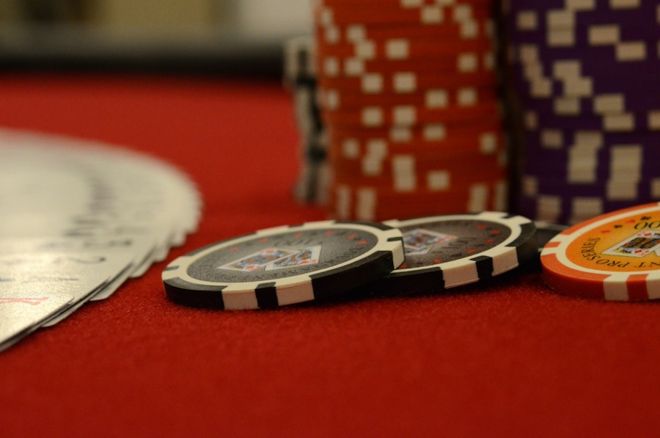
This is the fourth in a continuing series examining so-called “conventional poker wisdom” that I am upending. In this column we’ll look at the old saw “Never play with scared money.” This adage refers to the mistake of playing at stakes that are higher than those you feel comfortable playing. There is something wise about the advice, but on balance I think it is one that we can thoughtfully abandon.
Let’s look first at what recommends this “poker truism.”
At it’s best, poker should be a strategy game played with money. Money is the score keeper — the medium in which poker is played. As best we can, we the strategic player should separate out the real world value of money from our playing decisions.
The poker sages generally tell us that when the money involved in a poker game exceeds what we might comfortably lose, it can only have a negative impact on our playing decisions, causing us to be too timid in the face of our opponents’ aggression. We may well sacrifice what our mind would tell us was the strategically correct decision because we were financially uncomfortable with it, leading us to poker ruin.
So goes the historically embraced thinking, anyway.
But I have found this recommendation to be unduly limiting for the thoughtful player. I would argue that you may sometimes sit in on games that are of a larger stake than you would normally feel comfortable playing, provided that you do so deliberately, and that you adjust your playing strategy accordingly.
Games of Equal Stakes Are Not Necessarily Equal
Recognize at the outset that not all games of equal stakes play the same way. Some $1/$2 games are tight, timid, and sedate affairs, accommodating a relatively small poker bankroll. In such games, players typically call the $2 big blind. If someone raises to $7, nearly all — if not all — opponents fold. If there’s a caller and you continuation bet on the flop, your opponent will fold much of the time.
Meanwhile other games are rammin’ and jammin’ affairs where the typical raise is to $15 or $20 and where it is unusual not to have a three-bet or four-bet preflop. These games, though they are technically still described as $1/$2, require a bigger bankroll to master.
By extension, you can lessen the risk of losing in a bigger game by seeking those bigger games that are played more conservatively. Similarly, you can adjust your style of play to lessen the swings of any game, even if it means adopting a style that would normally be outside of your poker comfort zone. While this might lessen the potential profitability of a game, it still might make it more profitable for you than the alternative.
Consider this scenario. You are playing a $1/$2 cash game. It started off great, with some deep stacks in front of bad players. But these poor players have left the game and been replaced by short-stacked rocks. You notice right next to you a $2/$5 game with a seat open. There are eight guys with fairly deep stacks. When you look at the line-up you realize that a few players are drunk, laughing, and passively gambling it up, calling nearly whatever bets come to them, but seldom raising.
Why not move over? Raise your starting standards and tamp down some of those more aggressive moves you’ve been making at the lower stakes game where your bankroll is less challenged. Avoid stack-to-stack confrontations even where you judge yourself to be the slight favorite. Even with these restrictions, meant to diminish your risk, you may still have a sufficient edge in the game to warrant playing it.
In other words, if the circumstances are right, you can take a shot at a game that might be typically above your head. But you’ll make some adjustments in the way that you play to minimize the risk without eliminating the potential reward.
Adjust Your Game, Minimize Your Risk
Here’s another example of what I am describing. A seat to the immediate left of a poor player who has been drinking opens up at an otherwise relatively sedate $5/$10 game. You slide into the seat from a dead $1/$2 game. Here’s how you can make this work for you.
Your first decision is your buy-in. Typically, at $1/$2 you always buy in for the maximum to make sure you get the maximum advantage against bad opponents. The $5/$10 buy-in spread is $500 to $2,000.
Minimize your risk and buy in for the minimum. True, you won’t be able to maximize your advantage in every situation. Yes, you’ll give up some edge that way, assuming your skills are better than your opponents. But that’s okay. If the game is as you assessed it to be, you’ll still have an edge. Don’t let the ideal be the enemy of the profitable.
Adjust your play by tightening your starting standards somewhat to take advantage of this $5/$10 game. In the $1/$2 game that you typically dominate, you might well call or even raise with speculative hands like J♣10♥ from middle or late position, Q♥6♥ from the button, or even 5♣4♣ under the gun. But here in this $5/$10 game you’re going to ease up and fold those hands.
Instead you’ll generally stick to the premium hands, taking advantage of the player to your right’s inclination to call with sub-premium starters. When you do play those hands, you’ll play them aggressively, trying to isolate the loose player while staying out of the way of the stronger players. Your image will become rockier as you fold all of those borderline hands, meaning that when you raise, the good players will notice and tend to avoid you. But the poor player will tend to call along, giving you some excellent opportunities to profit at his expense.
For example, in this imagined game with the drunk loose player on your right, when he calls a raise to $30 from the solid aggressive player to his right and you find yourself with AxAx, KxKx, QxQx, or AxKx, go ahead and call. Assuming the three of you see the flop, if the preflop aggressor bets and your poor-playing neighbor calls, go ahead and raise three times the bet — and expect to take down the pot.
True, you might get stacked if either of your opponents has really hit good. But the vast majority of the time they’ll lay down even their moderately strong hands since a very tight player like you has uncharacteristically shown aggression. And with your big starting hand, even if you’re somehow behind on the flop, you will still have outs nearly all the time.
The key is that you will put yourself in a position to take advantage of a game that is under normal circumstances over your head by deliberately changing those circumstances to minimize your risk while not eliminating the profitability of the bigger game. Bear in mind that I’m not recommending that you routinely play over your head. Most of the time you will be better off playing well within your comfort zone so you can maximize your profit potential. But you should give yourself the freedom occasionally to play higher, so you don’t miss profit opportunities that may arise at the higher stakes games.
Another Benefit of “Shot-Taking”
Here’s another reason occasionally to play higher, or at least not to make it a hard-and-fast rule never to play in games above your typical, comfortable stake. By sometimes playing in these games, you will be helping yourself ease into the higher stakes where your hourly profit should eventually be higher in the long run.
Even with bankrolls enriched from winning at lower stakes games, it’s often psychologically tough for many players to make the adjustment to a higher stakes game after having limiting themselves to lower stakes games for a long time. Just the thought of playing at a certain level makes them uncomfortable, even with the requisite bankroll to back them up.
But by occasionally taking stabs at higher stakes games, you will be gradually acclimating yourself to a bigger game, preparing yourself mentally for more permanent move, something winning low-limit players who are looking to increase their hourly profits should generally be doing. By giving yourself the experience of playing higher even before your bankroll fully qualifies, you will be warming up to the idea of doing so most of the time, when you are financially able to sustain the swings of the game as you would ideally like to play it.
Photo: “Poker Chips,” slgckgc. Creative Commons Attribution 2.0 Generic.
Ashley Adams has been playing poker for 50 years and writing about it since 2000. He is the author of hundreds of articles and two books, Winning 7-Card Stud (Kensington 2003) and Winning No-Limit Hold’em (Lighthouse 2012). He is also the host of poker radio show House of Cards. See www.houseofcardsradio.com for broadcast times, stations, and podcasts.
Want to stay atop all the latest in the poker world? If so, make sure to get PokerNews updates on your social media outlets. Follow us on Twitter and find us on both Facebook and Google+!
In this Series
- 1 Home Game Heroes: Upending Conventional Poker Wisdom About Home Games
- 2 Home Game Heroes: Upending Conventional Poker Wisdom -- Don’t Play With Strangers?
- 3 Home Game Heroes: Upending Conventional Poker Wisdom -- Set an End Time and Stick To It?
- 4 Home Game Heroes: Upending Conventional Poker Wisdom -- Never Play With Scared Money?
- 5 Home Game Heroes: Upending Conventional Poker Wisdom -- Avoid Wild Card Games?

